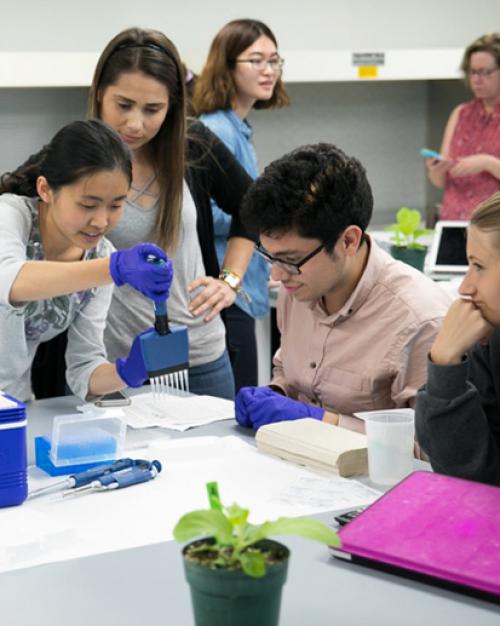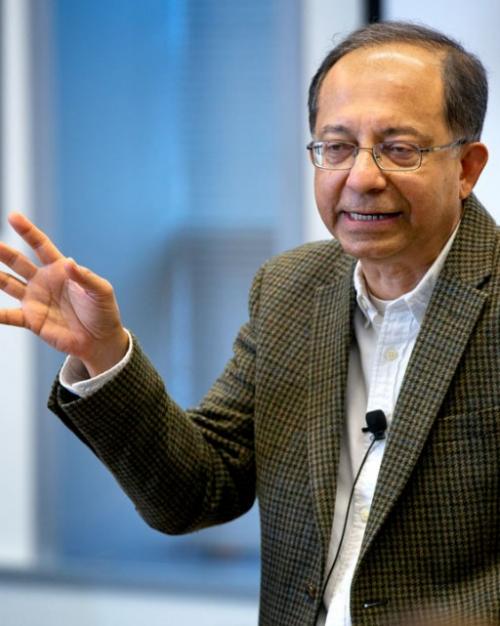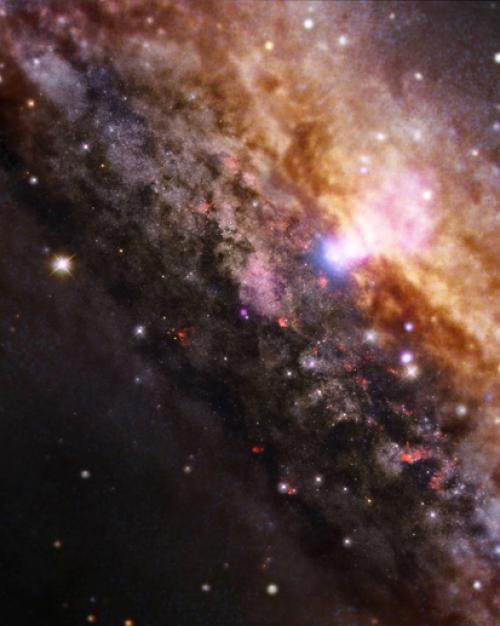As humans, we have an insatiable desire to understand the cosmos and our place in it. How did the universe begin and how did it evolve? What is the nature of dark matter and dark energy? How will it all end? “These are the most fundamental questions one can ask,” says Steve Kang Hoon Choi, Cornell Presidential Postdoctoral Fellow. “If we believe greater knowledge betters our lives, then this is what drives us to study the cosmos.”
Choi has been drawn to the night sky and the mysteries it holds since he was in middle school. In the summer of 2018, he came to Cornell as one of the inaugural group of Cornell Presidential Postdoctoral Fellows to work with Michael D. Niemack, Physics, and Gordon J. Stacey, Astronomy, on new telescope projects that may help shed light on some of the biggest cosmological puzzles.
CCAT-p High in Chile’s Atacama Desert, to Unravel the Early Universe
Choi is part of two collaborations: the Cerro Chajnantor Atacama Telescope-prime (CCAT-p) and the Simons Observatory. The CCAT-p will be located at 18,000 feet in the Atacama Desert of Chile and deployed for first light in 2021. The Simons Observatory will be situated also in the high Atacama Desert with a target date for first light in the early 2020s.
“Everyone is looking for it, but no one has found it yet. It’s so small, we had to join forces to build the most sensitive instrument we possibly could to even have a chance at detecting it.”
Cornell is leading the effort to design and build CCAT-p. Among other things, the six-meter telescope is designed to make sensitive cosmological observations of the Cosmic Microwave Background (CMB)—electromagnetic radiation from the early universe 13.8 billion years ago. The CMB originated approximately 380,000 years after the Big Bang, when the hot and dense universe expanded and cooled enough to allow electrons and protons to form neutral hydrogen. The observations of the CMB were a foundation for the standard model of cosmology today, but many questions remain to be explored.
“The pattern that we’re trying to measure in the CMB is so tiny, we have to design very sensitive telescopes and put them in the driest places on earth at high altitudes to avoid having water in the atmosphere interfere with the measurements,” Choi explains. “Even then, the signal is so small, we have to build thousands of superconducting detectors and readouts operating at sub-kelvin temperatures to measure the cosmic signal.”
As a participant in the CCAT-p project—headed by Niemack, Stacey, and Terry L. Herter, Astronomy, as well as others in Cornell’s Astrophysics and Physics Departments—Choi will not only collaborate on the design and the instruments’ build, but he will also help analyze the data it ultimately collects and map the universe. “Along with CMB polarizations, CCAT-p will measure the largest gravitationally bound objects, galaxy clusters, and their motions,” Choi says. “From that, we’ll study the nature of dark energy, which is something we currently know very little about except that it exists.”
CCAT-p will also measure intensity from molecular lines that reveal information about the first star formations from the Epoch of Reionization, a time period in the early universe that’s little studied. “Gordon Stacey’s group builds instruments that measure these lines,” Choi says. “We’re combining efforts: our experience in developing and using large-element, superconducting detector and readout technology, coupled with Gordon’s expertise at designing and building these instruments.”
The Simons Observatory, Detecting the Minuscule
Choi also works on the Simons Observatory, a major project made up of a large telescope and three smaller ones. Niemack’s group is heavily involved in Simons, which is a collaboration of many institutions around the world. “For Simons, we’ll be initially testing many of these superconducting detectors and ensuring the readout chains work correctly,” Choi says.
The primary goal of Simons is to detect the signature of cosmic inflation, a leading theory in Big Bang cosmology, by measuring the pattern primordial gravitational waves imprint on the CMB polarization. Scientists theorize these waves were generated at the first fraction of a second when the universe expanded faster than the speed of light.
“They distort space time, and if big enough, they will have left a measurable pattern in the CMB—the B-mode polarization,” Choi says. “This pattern is a signal many people have been trying to detect for years. Everyone is looking for it, but no one has found it yet. It’s so small, we had to join forces to build the most sensitive instrument we possibly could to even have a chance at detecting it.”
A Radical Collaboration
Before coming to Cornell, Choi’s graduate work at Princeton University involved helping to build, test, and deploy superconducting detectors for the Atacama Cosmology Telescope (ACT), located in Chile near the CCAT-p and Simons sites. Niemack had helped design and build the ACT as a Princeton graduate student himself in the early 2000s.
“One of the interesting things about these different groups is that they have slight differences in the technologies they use because of differences in their capabilities—variations in the detector technology and in the telescopes themselves,” Choi says. “But a lot of technology is shared. For instance, the large telescope in the Simons Observatory is a copy of CCAT-p, and the two projects share many other technologies. So there’s a synergy between these two collaborations. Being here at Cornell, I hope to take advantage of that synergy to advance both.”




